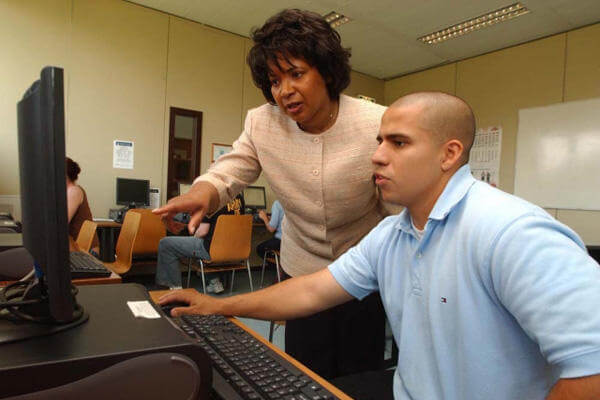For a long time, veterans struggled with a higher unemployment rate than civilians. But after years of concerted efforts to bring former service members into the civilian working world, the rate has finally fallen below the national average. Since October, veteran unemployment has remained at roughly 3.9%, which is lower than the national average of 5%.
The drop in unemployment is due to a variety of factors, but among them are major pushes from companies to attract and hire more veterans. Most of these initiatives have met their original goals and are now setting their sights even higher. For example, the organization formerly known as the 100,000 Jobs Mission, a coalition of private and public groups designed to get veterans to jobs, is now calling itself the Veteran Jobs Mission and wants to hire 1,000,000 veterans.
Despite the drop in unemployment, companies and veterans still have a long road ahead of them. The first issue is that despite an unemployment rate of 3.9%, there are still many veterans who need assistance in landing a job. The fact that many companies have increased their hiring commitments is a sign that they won't be satisfied with a rate 1% lower than average.
"Until every veteran who wants a job is hired, our work is not done," Ross Brown, head of military and veteran affairs at JPMorgan Chase, said.
However, according to the Los Angeles Times, some skeptics argue that while hiring goals sound great, they're overly ambitious and don't directly address real problems.
"They won't be able to hire a million veterans any time soon," Jeffrey Wenger, a public policy expert at the Rand Corp. think tank in Santa Monica, said. "There aren't a million veterans to hire."
Groups like the Veteran Jobs Mission point to the fact that roughly 200,000 service members leave the military each year as an indication that one million new veteran hires should be possible in a matter of years.
Are you worried about where to find employment once you leave the military?
If you have any technical aptitudes, you should consider the IT industry. It's a lucrative business, and there's no shortage of open positions. If you're up to the challenge, Microsoft provides a program called the Microsoft Software and Systems Academy (MSSA) to develop aspiring IT professionals and help them secure employment.
Those who successfully complete the program will be given the opportunity to interview for a full-time position with Microsoft.
Not sure whether the MSSA is a solid bet? According to Microsoft, the program features a 91% graduation rate, and the average salary for employed graduates is $70,000. Furthermore, it's not just Microsoft that hires graduates; there are a total of 81 companies that hire graduates of the MSSA program.
How to Prepare
Before joining the MSSA, you need to have an active interest in IT and command authorization, as well as an active honorable service record. Think about which career path you'd like to pursue and gain the appropriate Microsoft technology associate (MTA) certification. Microsoft provides multiple exams for each of the three specialties (IT infrastructure, database, developer). To gain an MTA, you only need to pass a single exam. Optional training is provided for most of the exams, and each course takes roughly three days. Be aware that each exam costs $115 to take.
- Server and cloud administration cohort: Take the Networking Fundamentals Training to find out how to put the many pieces together to build a functional and secure network.
- Database and BI (business intelligence) administration cohort: Take the Database Fundamentals Training, designed for individuals seeking to learn database fundamentals, including relational databases, database management systems and database components.
- Cloud application developer cohort: Take the App Development Fundamentals Training and explore introductory concepts for HyperText Markup Language (HTML), Cascading Style Sheets (CSS) and JavaScript.
Required documents:
- Copy of your service record for Education Center
- Resume
- High school diploma or GED
- Successful completion of high school algebra
- Gain a Microsoft technology associate (MTA) certification
Steps to Join
Whether you're active duty or discharged, the steps to joining the MSSA are simple. Just make sure that you have a particular IT field in mind, and that you are able to earn an MTA certification.
Active-duty service members must:
- Secure command approval to participate
- Complete and sign a MOA and return it to the education office
- Submit a resume, proof of honorable service status, proof of math requirements and financial aid applications (program voucher, GI Bill, tuition assistance or federal student aid)
- Begin thinking about your specific IT career path by reviewing Microsoft Virtual Academy training options (see Preparation section below).
- Gain a MTA certification
Discharged service members must:
- Submit a resume, DD-214 proof of honorable discharge, criminal background check, high school diploma or GED, proof of math requirements, and financial aid applications (program voucher, GI Bill or federal student aid)
- Begin thinking about your specific IT career path by reviewing Microsoft Virtual Academy training options (see Preparation section below).
- Gain a MTA certification
To learn more about MSSA or apply for the program, please contact your Base Education Center.
- If you are not located at a base where MSSA is currently provided, please contact your command for a transfer. Transfer requires proof of housing, transportation and food allowance.
- For more information, contact the MSSA operations team at mssaops@microsoft.com.
Want to Know More About the Military?
Be sure to get the latest news about the U.S. military, as well as critical info about how to join and all the benefits of service. Subscribe to Military.com and receive customized updates delivered straight to your inbox.











